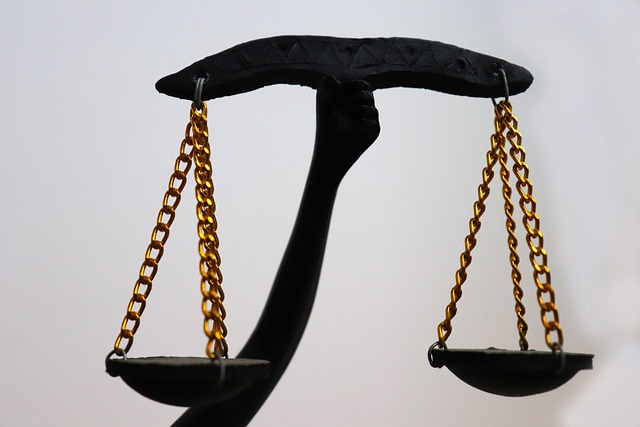Mail wire fraud, a growing digital threat, involves deceptive money transfers. To join a class-action lawsuit against perpetrators:
1. Gather Evidence: Collect records of fraudulent transactions and communication with the fraudsters.
2. Consult Experts: Speak to legal professionals specializing in financial crimes for guidance.
3. Understand Success: Be aware that successful collective action has a proven track record in combating such frauds.
Initial Steps After Fraud: Report it to local law enforcement and file complaints with relevant bodies like the FTC. Consider class action if losses are substantial.
Navigating Class Action:
1. Connect with an Attorney: Specializing in mail/wire fraud cases, they assess case viability for a class action.
2. Gather Evidence: This strengthens your claim.
3. File Complaint: Legal teams pursue negotiations, mediation, or trials to secure compensation and deter future fraud.
4. Active Participation: Sign onto the case, cooperate with legal teams, and stay informed throughout.
Mail wire frauds, a sophisticated and increasingly common scam, pose significant risks to individuals and businesses alike. This comprehensive guide delves into the intricate world of mail wire frauds, offering a detailed understanding from inception to resolution. We explore common schemes, red flags to watch for, and your legal rights as a potential victim. For those considering participation in a class action lawsuit, we outline clear steps to join and contribute to a successful case, empowering you to protect against these insidious crimes.
- Understanding Mail Wire Frauds: A Comprehensive Overview
- Identifying Common Schemes and Red Flags
- Your Legal Rights and Options as a Victim
- Navigating the Class Action Lawsuit Process
- Steps to Join and Contribute to a Successful Case
Understanding Mail Wire Frauds: A Comprehensive Overview

Mail wire frauds, a sophisticated form of financial deception, have become increasingly prevalent in today’s digital age. These fraudulent schemes involve manipulating electronic money transfers, often through deceitful tactics like phishing, identity theft, or impersonation. Once executed, victims may find themselves facing significant financial losses, with funds being redirected to unknown accounts without their consent or knowledge. Understanding these scams is the first step towards safeguarding personal finances and becoming an active participant in combating such illicit activities.
To join a class-action lawsuit against mail wire fraudsters, individuals must take several crucial steps. Firstly, victims should gather evidence of the fraudulent transactions, including communication records and any available documentation. Next, connecting with reputable legal experts specializing in financial crimes is essential. These professionals can guide affected parties on how to navigate the complex legal landscape, ensuring a complete dismissal of all charges if the fraudster’s actions meet the required criteria for such legal outcomes. The unprecedented track record of successful cases within the philanthropic and political communities underscores the effectiveness of collective action against these criminals.
Identifying Common Schemes and Red Flags

Mail wire frauds are sophisticated scams that have become increasingly prevalent, targeting individuals and businesses alike. Identifying common schemes is the first step in protecting yourself. Scammers often use impersonation tactics, pretending to be from reputable financial institutions or government agencies. They may send emails, texts, or make phone calls demanding immediate action, threatening severe consequences if you fail to comply. For instance, a scammer might claim there’s a problem with your bank account and instruct you to wire funds to a specific account for verification or to avoid legal repercussions. Another common tactic is the promise of significant rewards or grants in exchange for upfront payment or personal information.
Recognizing red flags is crucial when it comes to these frauds. Be wary of urgent requests, unexpected financial offers, or any communication asking for sensitive data over unencrypted channels. Legitimate organizations typically provide clear instructions and guidelines for handling such matters securely. If something seems off, verify the sender’s identity through official channels. Taking proactive measures, like joining a class action lawsuit (a powerful tool to achieve extraordinary results against white-collar offenses), can also play a significant role in combating mail wire frauds and winning challenging defense verdicts.
Your Legal Rights and Options as a Victim

As a victim of mail wire fraud, it’s important to know that you have legal rights and options available to you. The first step is to report the incident to local law enforcement and provide them with all relevant information and evidence. You can also file a complaint with the Federal Trade Commission (FTC) or other relevant regulatory bodies, which can help investigate and take action against the perpetrators.
If the fraud has caused significant financial loss, you may consider joining a class-action lawsuit. This collective legal action allows victims to band together and seek compensation from the respective business or individuals responsible for the high-stakes cases. By participating in a class-action lawsuit, you can aim for complete dismissal of all charges against you and potentially recover losses incurred due to the fraudulent activities.
Navigating the Class Action Lawsuit Process

Navigating the Class Action Lawsuit process involves several steps. First, individuals who believe they’ve been affected by a specific fraud, like mail wire fraud, need to identify and connect with an attorney specializing in class action cases. This lawyer will help determine if your case is suitable for a class action lawsuit, where damages are awarded based on the collective harm suffered by all plaintiffs. The process includes gathering evidence, such as documentation related to financial losses or fraudulent interactions, which strengthens the case’s merit.
Once a law firm decides to take on the case, they’ll file a complaint with the court, initiating legal proceedings. This often leads to negotiations, mediation, or even jury trials across the country, aiming to achieve extraordinary results for all involved. The goal is to secure compensation for victims and potentially create precedents that deter similar fraudulent activities in the future. Steps to join such a lawsuit involve signing onto the case, cooperating with legal teams, and staying informed throughout the legal process.
Steps to Join and Contribute to a Successful Case

Joining a class action lawsuit can be a powerful way to hold businesses accountable and seek justice for harm caused by mail wire fraud. The first step is to dive into the specifics of the case. Research thoroughly, understanding the allegations, affected parties, and the legal arguments presented. This knowledge will help you determine if your situation aligns with the lawsuit criteria. If eligible, contact the law firm handling the case to express your interest. They will guide you through the process, ensuring your rights are protected.
Once onboarded, contributing to a successful outcome is key. Stay engaged, providing all relevant documents and information requested by legal representatives. Attend any required meetings or depositions. Remember that each action, no matter how small, can make a difference in the overall resolution for his clients. Your participation ensures the case has a stronger chance of success and may lead to substantial compensation for all involved.
Mail wire fraud can have devastating consequences, but understanding common schemes and taking proactive steps can help protect yourself. If you’ve fallen victim to this type of fraud, knowing your legal rights and options is crucial. Navigating a class action lawsuit can be complex, but by joining forces with other affected individuals, you can increase your chances of achieving justice and financial recovery. Follow the simple Steps to Join a Class Action Lawsuit outlined in this article to take control and contribute to a successful case against mail wire fraudsters.






